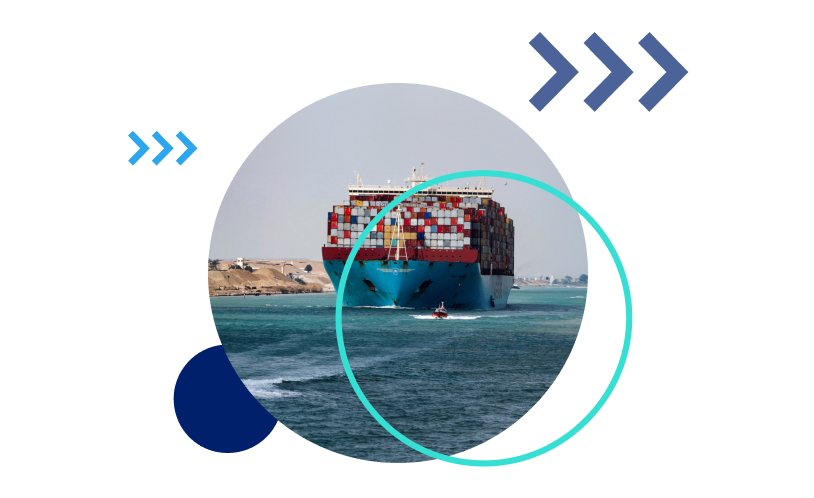New Tariffs Update
A US federal appeals court has upheld a previous US Court of International Trade decision that deemed the president’s use of the International Emergency Economic Powers Act (IEEPA) for tariffs illegal. While the case is headed to the Supreme Court, all current tariffs will remain in place until a final ruling, which likely won’t come until well into next year. This extends the uncertainty for global trade, with no immediate relief in sight.
The trade war is reshaping air cargo patterns, with increased volumes from Vietnam and Bangladesh as shippers seek alternatives to tariff-affected countries. Additionally, the US has now ended the de minimis exemption for all imports after closing it to China in May. While this change impacts e-commerce importers, the most significant effects were likely already felt when China – which accounted for 75% of de minimis entries – was excluded. Despite these shifts, parallel adjustments in capacity have kept air cargo rates relatively stable across most major trade lanes, with prices generally remaining within ranges seen since spring.
To learn the latest in tariff and freight news, click here.
Red Sea Shipping Disruption News & Updates
As Red Sea diversions continue well into their second year, the shipping landscape is evolving in unexpected ways. Despite these long-running route disruptions, ocean freight rates on major Asia-Europe lanes have actually decreased, with prices falling 7% to $2,841/FEU last week. This suggests that fleet growth and expanding capacity are now outweighing the impact of longer transit times, even as carriers maintain diversions around the Cape of Good Hope. This combination of easing rates despite ongoing disruptions, alongside persistent trade policy uncertainty, points to a freight market increasingly shaped by structural capacity changes rather than temporary crises.
2025 Red Sea Outlook
As we move toward the final quarter of 2025, the Red Sea situation has evolved from an acute crisis to a persistent market reality. Despite continued diversions around the Cape of Good Hope, rates on major Asia-Europe lanes have fallen 7% to $2,841/FEU last week – notably below 2024 levels even as Red Sea diversions remain in place. This counterintuitive trend strongly suggests that fleet growth is now the dominant factor in the market, outweighing the impact of longer transit times. With carriers continuing to order more ships despite these conditions, the capacity expansion appears set to maintain downward pressure on rates through the remainder of the year. The shipping industry has adapted its networks and operations to accommodate what was once considered a temporary disruption and is now a standard feature of global shipping patterns. As Golden Week approaches, carriers are expected to increase blanked sailings on these lanes, but the overall trajectory points to a market increasingly defined by structural capacity changes rather than by the Red Sea crisis itself.
Stay Ahead of Tariff Disruptions
Get real-time updates and expert insights with Freightos Terminal
For more about the Houthi Attacks in the Red Sea and Suez Canal disruptions, click here.
Ocean Freight Market Updates, Shipping Costs, and Delays
Transpacific container rates have dropped in recent months and held steady in recent weeks although though daily rates jumped $400-$500/FEU on both West Coast and East Coast routes in early September. This sudden increase likely reflects carrier attempts to implement September General Rate Increases, though recent demand patterns suggest carriers may struggle to sustain these higher levels. Even if successful, these rates would remain well below last year’s peak season levels, when West Coast rates reached $7,000-$8,000/FEU, and would still fall short of 2024’s slowest period when rates bottomed at around $3,000/FEU in April. This year-on-year comparison points to growing overcapacity already exerting downward pressure on rates despite ongoing Red Sea diversions.
Asia-Europe trade lanes are experiencing similar softening, with rates to Northern Europe falling 7% to $2,841/FEU last week, while Asia-Mediterranean prices dipped 2% to approximately $3,000/FEU. Carriers are responding by announcing increased blanked sailings as Golden Week approaches. That these rates have fallen below 2024 lows – a year when Red Sea diversions were credited with establishing an elevated price baseline – further confirms that fleet growth is offsetting the impact of longer transit times.
- Asia-US West Coast prices (FBX01 Weekly) decreased 1% to $1,725/FEU
- Asia-US East Coast prices (FBX03 Weekly) decreased 1% to $2,708/FEU.
- Asia-N. Europe prices (FBX11 Weekly) decreased 7% to $2,841/FEU.
- Asia-Mediterranean prices (FBX13 Weekly) decreased 2% to $3,033/FEU.
Want updates sent right to your inbox? Sign up for our weekly newsletter here.
Real-Time Shipping Insights at Your Fingertips
Freightos Terminal delivers the most up-to-date shipping news and freight events as they happen. Sign up for free today and stay ahead of the game.
Ocean Freight Market Forecast for 2025 – Q4 Outlook
As we enter the final quarter of 2025, capacity growth has become a dominant market force. Transpacific rates remain significantly below levels of the past few years. Current data shows rates have fallen 60-70% in an almost uninterrupted slide since June’s tariff deadline-driven early peak season rush, with West Coast rates decreasing 10% to $1,744/FEU just last week – the lowest level since December 2023.
Looking ahead to year-end, carriers’ increased announcements of blanked sailings ahead of Golden Week indicate attempts to manage persistent overcapacity, but the underlying trend points toward continued rate pressure. This structural challenge appears unlikely to resolve in the near term, as the global vessel orderbook recently hit a record high despite current market conditions. Asia-Europe lanes tell a similar story, with rates now sitting approximately 60% lower than last year, mirroring the 70% year-over-year decline seen on transpacific routes.
The implementation of trade agreements continues to affect the freight market as well. China’s recent dispatch of a top trade negotiator to Washington following the 90-day extension of 30% baseline US tariffs may signal potential developments, but any resulting volume shifts will likely be gradual rather than immediate.
Air Freight Market Update, Delays, Cost Increases, and Forecast for 2025
Despite significant trade policy shifts and regional volume changes, the air cargo market has maintained remarkable stability through 2025. Recent US tariff increases on India have generated noticeable demand and capacity increases out of neighboring Bangladesh, while the ongoing trade war has driven substantial growth in air cargo volumes from Vietnam, particularly in electronics shipments. This has prompted capacity expansions not only to North America but to European destinations as well. However, these regional shifts have largely balanced each other out in the broader market.
The full closure of the US de minimis exemption last week, following its earlier suspension for Chinese imports in May, has had less impact on overall air cargo volumes than initially feared. Reports indicate significant drops in China-US e-commerce air shipments since May, but Chinese platforms have successfully redirected focus to other markets, particularly Europe, where e-commerce imports have doubled in value during this period. These quick, parallel shifts of capacity between markets have kept air cargo rates relatively stable across most major trade lanes.
Air rates – Freightos Air Index
- China – N. America weekly prices decreased 5% to $5.30/kg.
- China – N. Europe weekly prices rose 5% to $3.70/kg
- N. Europe – N. America weekly prices decreased 3% to $1.67/kg.
Amazon Shipping Costs in 2025
Keeping up with door-to-door pricing for Amazon FBA shipping can be a hassle. With data from thousands of weekly pricing points from freight forwarders, we’ve developed a weekly index of freight prices including for Less than Container Load (LCL), Full Container Load (FCL), and air cargo, from major export cities in southeast Asia to the most popular Amazon fulfillment centers in the US.
Want to know what the rates are instantly? Check out Freightos.com’s FBAX, the Amazon FBA freight index.
With data from thousands of weekly pricing points from freight forwarders, we’ve developed a weekly index of freight prices including for Less than Container Load (LCL), Full Container Load (FCL), and air cargo, from major export cities in southeast Asia to the most popular Amazon fulfillment centers in the US.
Read up on how Amazon sellers can deal with rapidly changing consumer demands as well as inventory challenges HERE.
Shipping Delays Impacting Your Business?
Freightos Terminal helps you compare quotes and modes, plus track shipments
When Will Shipping Costs Go Down?
Shipping rates have dropped significantly in recent months, but tariff uncertainty is still the dominant theme in the freight market. Here are some tips for managing the volatility:
How to navigate the current freight market:
- Compare at least a few quotes and modes to make sure you are getting the best cost and most efficient service possible.
- Buffer your freight budget and transit time for changes. Costs due to unforeseen delays or limited capacity can arise, so be prepared.
- Explore warehousing options to mitigate last-mile delays and additional storage ad delivery fees.
How small or midsize importers can plan for operational success on The Freightos Marketplace:
- Understand that delays and extra charges may arise. Freight forwarders are trying their best to move goods on schedule without additional fees, but in this unstable period, delays and additional charges can occur out of forwarders’ control.
- Consider which shipping mode is best for you right now. Ocean freight is typically far cheaper but has a significant lead time. If your transit time demands it, ship by air and you’ll have confidence in the transit times.
- Book early if you can. As soon as your goods are ready, book your shipment to get goods moving as quickly as possible.
- Communicate regularly with your freight forwarder. This is more important than ever – staying in touch means you’ll have a better handle on your transit time and stay on top of any changes that may arise.
- Make sure that you have the manpower to accept your goods upon arrival. This will minimize delays.
How to stay informed:
- Check out our daily FBX ocean rates index to help you stay on top of freight rates in 2025.
- Keep up to date on the industry with our weekly freight market update.
- Check out our predictions for freight market trends in 2025.
As always, we at Freightos.com are here to help. Please reach out if you have any questions or concerns.



